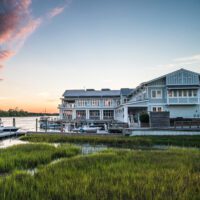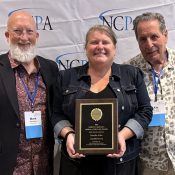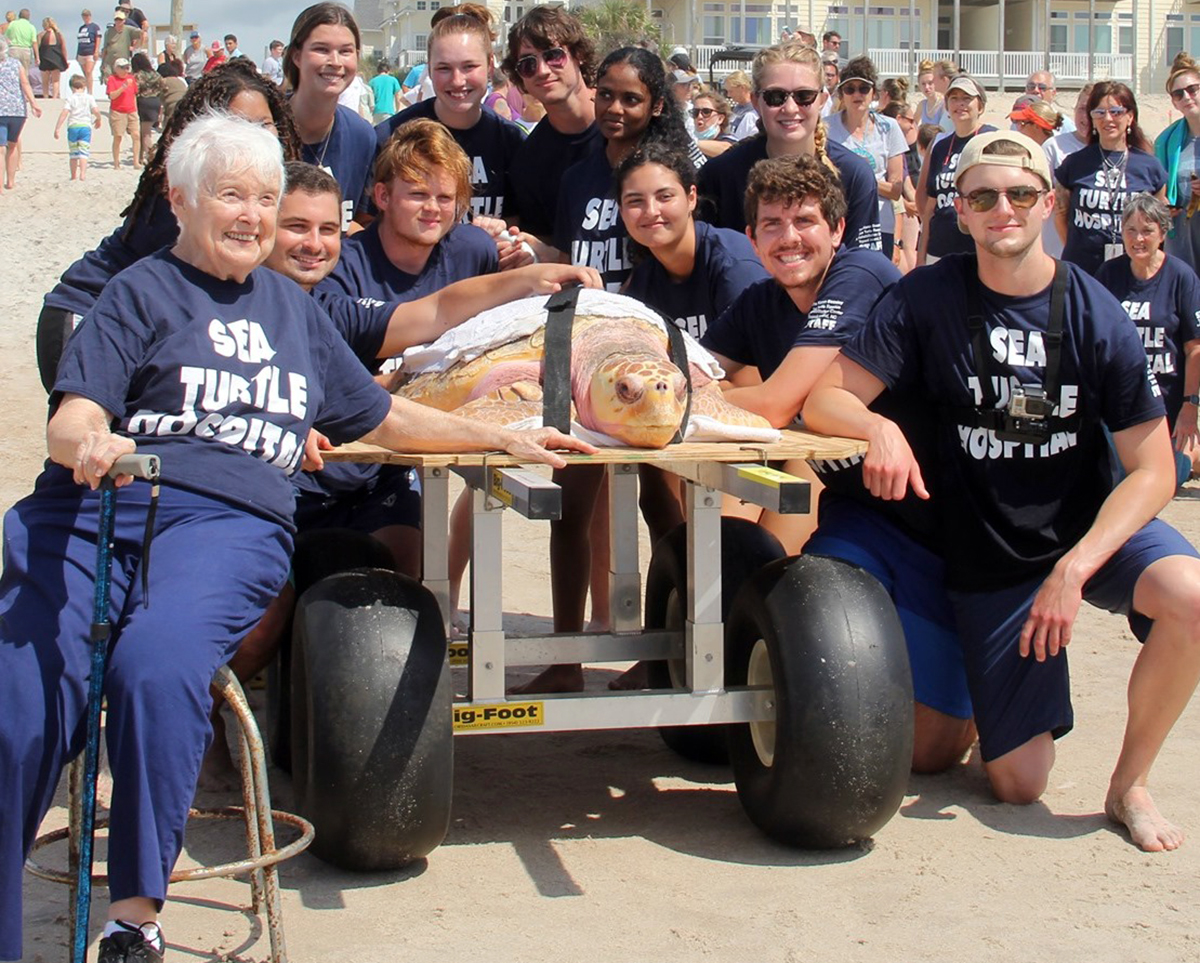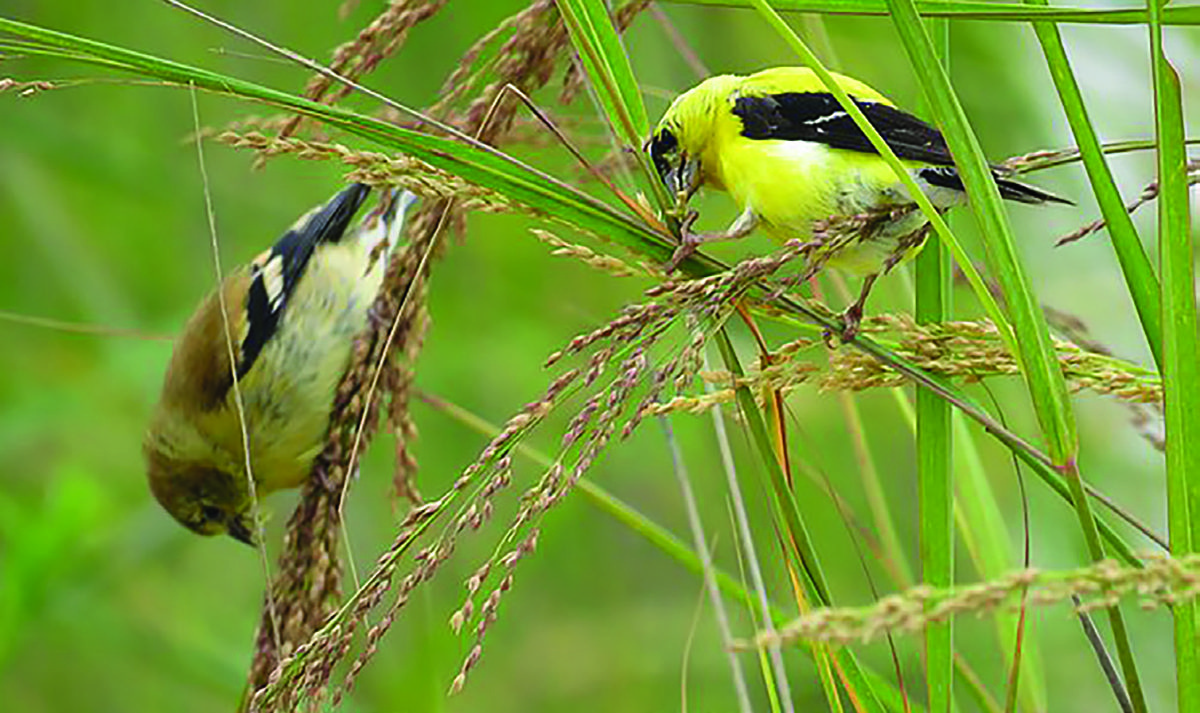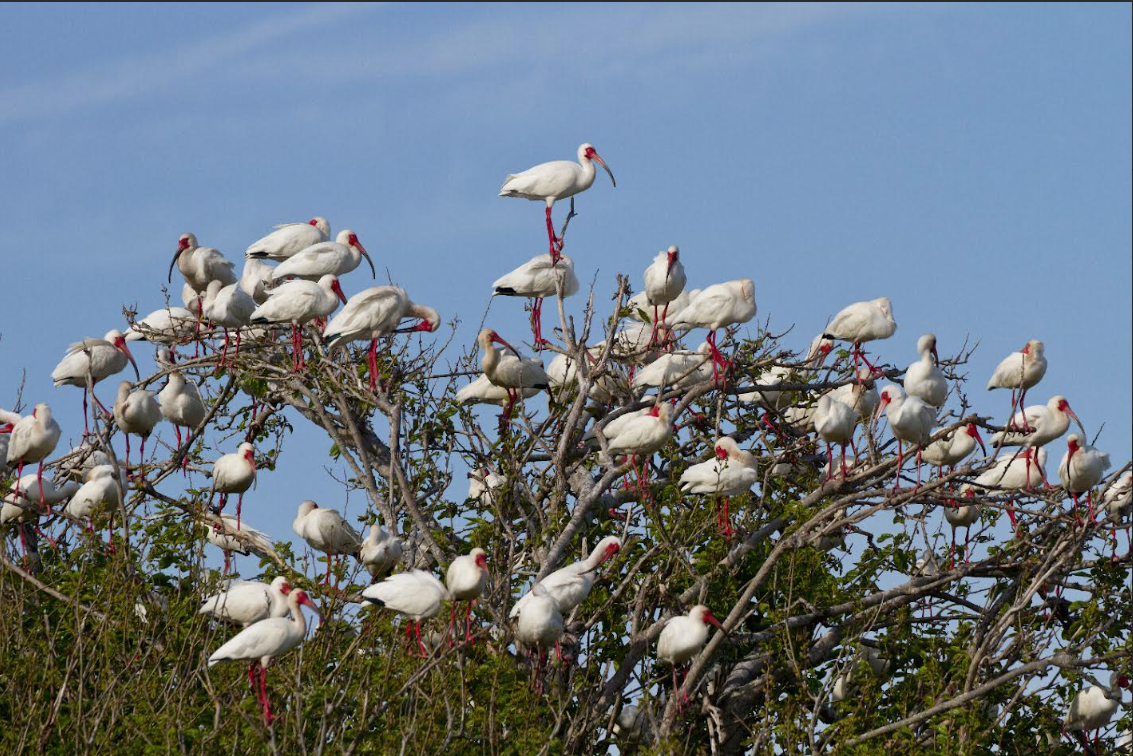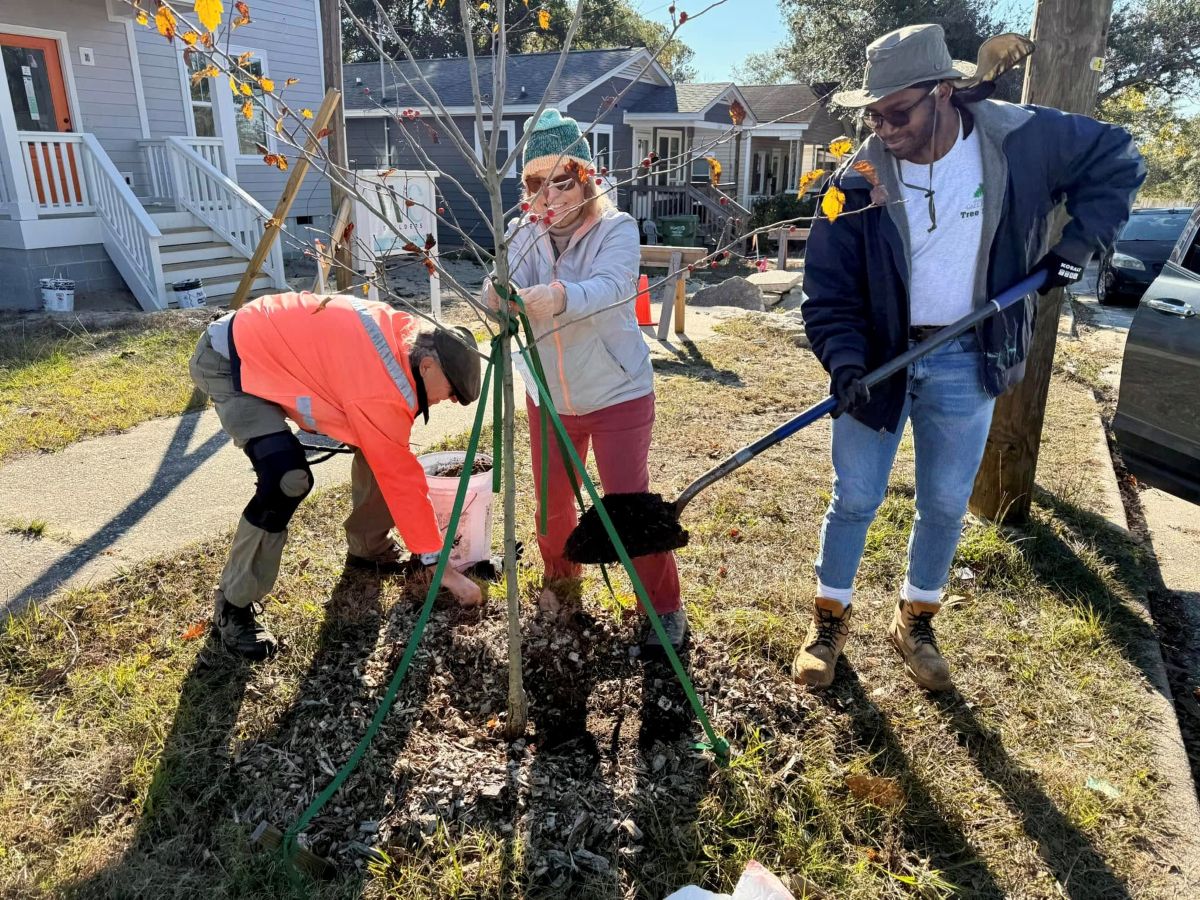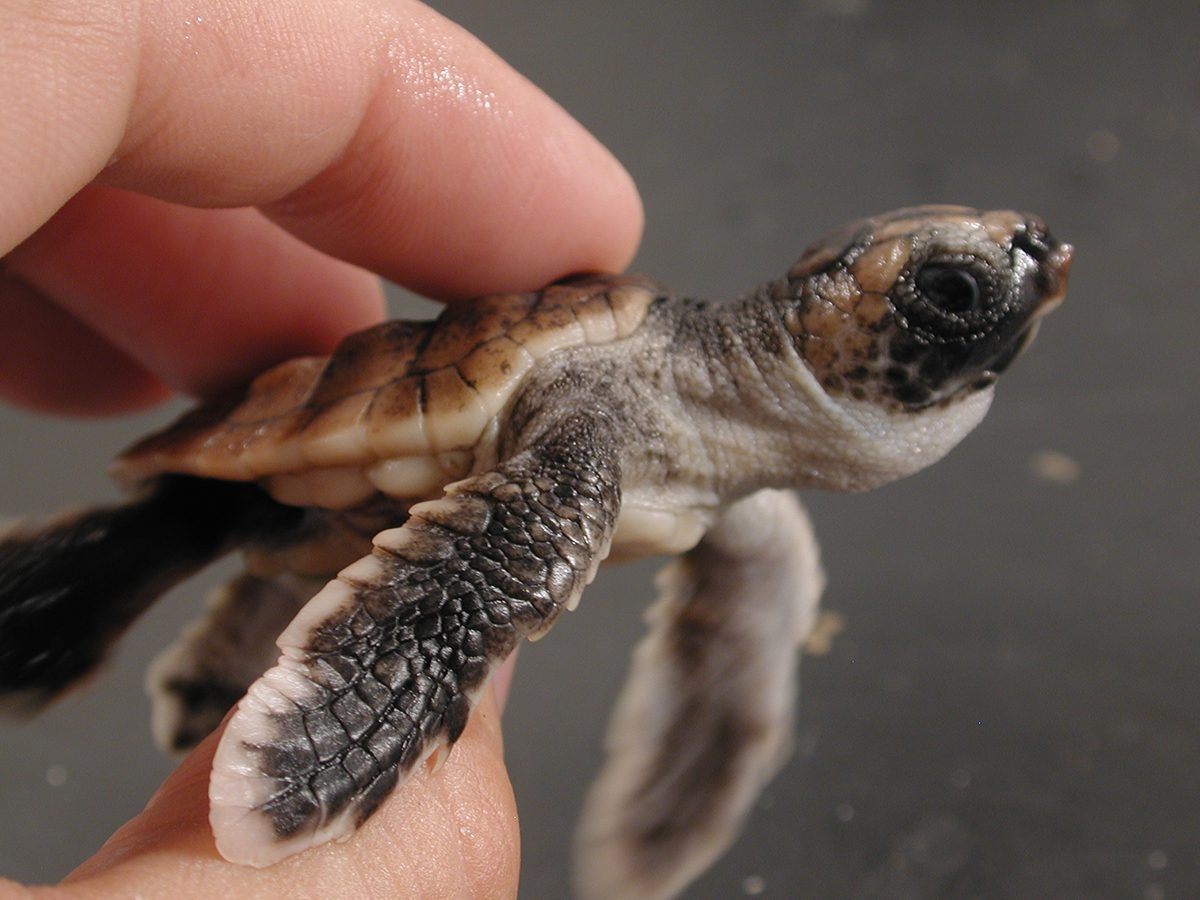
You have probably seen someone do a little happy dance when they spot their waiter heading to the table, entrée in hand. Turns out, sea turtles have the same reaction to the promise of a full belly.
University of North Carolina Chapel Hill researchers found that captive loggerheads could be conditioned to “dance” by associating certain magnetic fields with being fed food. This test allowed the researchers to test if they use the magnetic fields like GPS, a compass or both.
Supporter Spotlight
The study, “Learned magnetic map cues and two mechanisms of magnetoreception in turtles,” was published Feb. 12 in the science journal, Nature. Magnetoreception means that an animal can perceive the Earth’s magnetic fields.
Lead author Kayla Goforth is a recent doctoral graduate from UNC and is currently a postdoctoral fellow in the biology department at Texas A&M University.
For the study, the team conditioned different groups of 2-month-old turtles over the course of two months to differentiate between magnetic fields. The team replicated in the lab magnetic fields that exist along the Atlantic coast, from Canada to the Gulf of Mexico.
“Every other day they would experience one specific magnetic field in which they were fed. On the days they were not fed, they would experience a second magnetic field, but they did not receive any reward in this field. Eventually turtles begin to exhibit the ‘turtle dance’ in the field in which they were fed,” she said.
“The turtle dance is a food-seeking behavior that is characterized by the turtle lifting its head out of the water, opening its mouth, alternating its flippers and spinning,” Goforth said. “It’s super adorable.”
Supporter Spotlight
To produce the different magnetic fields, the team used magnetic coil systems. A magnetic coil is a large frame with wire wrapped around it, horizontally and vertically. When an electric current runs through the wires, a magnetic field is created inside the coil system, and “by increasing or decreasing the amps running through the wire, we can change the magnetic field.”
At the end of the conditioning period, the team tested the turtles in both magnetic fields and found that turtles danced more in the field in which they were fed.
“You can think of it like training a dog,” Goforth explained. “If you always ring a bell when a dog is given food, eventually they will begin to expect food when the bell is rung, and salivate or beg.”
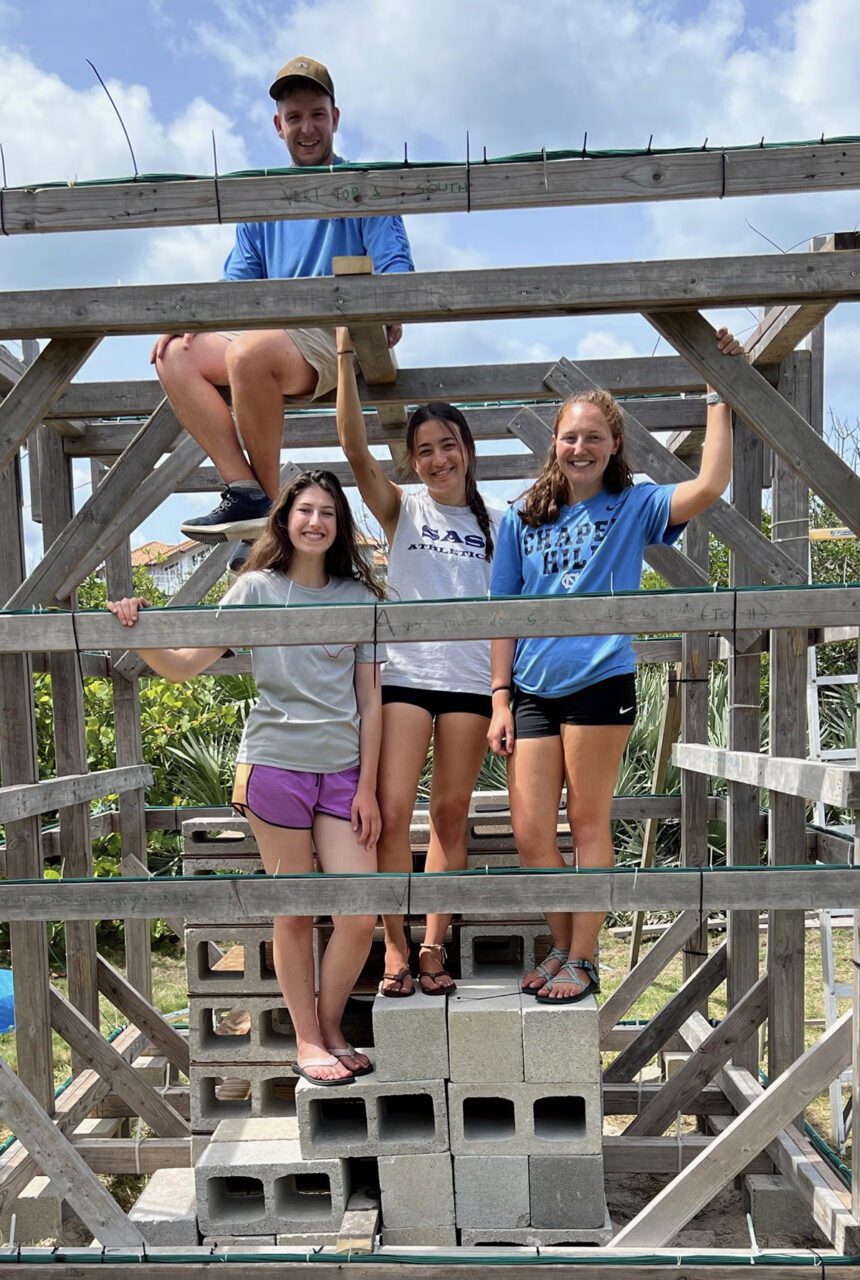
The team then investigated the mechanisms underlying the turtle’s magnetic senses.
“Turtles have both a magnetic map and a magnetic compass. A magnetic map is a positional sense, like a GPS, while a compass provides directional information,” she said, and both are required for navigation. A map tells you where you are or where you want to be and a compass helps guide you.
For this part of the study, the team tested both the turtle’s magnetic map sense and magnetic compass. Meaning, the turtles had to recognize a magnetic field and had to orient in a specific direction.
“We tested whether these two senses were disrupted by radiofrequency fields,” she said, because these fields are expected to disrupt chemical magnetoreception, which is a theory that suggests complex chemical reactions enable animals to detect magnetic fields.
The team found that the compass sense likely relies on chemical magnetoreception.
“The map sense, however, does not seem to rely on chemical magnetoreception. This means these two magnetic senses, while similar, are distinct. Just like seeing and hearing are two distinct senses,” she said.
Goforth explained that the idea for the study sparked from the well-known fact that sea turtles return to where they were born to reproduce, “but what is less well known is that turtles also display really strong fidelity to their feeding sites, meaning they consistently return again and again.”
How turtles learn the locations of those feeding sites is unknown but the team thought that they likely use magnetic fields.
“A missing piece of this idea though was that we did not know whether turtles could learn magnetic fields, so I decided to try conditioning, or training them to do so,” Goforth said. “We were really excited when it worked, and that assay then opened the door for studies into the mechanisms underlying the magnetic sense.” An assay is a procedure in a lab.
The findings answered two questions: if sea turtles can learn magnetic fields, and if the magnetic map and magnetic compass senses of turtles rely on the same underlying mechanism.
And while the findings answered those two questions – yes and no, respectively — it brought up another: “How sensitive are turtles to magnetic map information, i.e., what is the smallest difference in magnetic fields they could distinguish between? And,” Goforth said, “the next big question is, if the map sense does not rely on chemical magnetoreception, then what is the underlying mechanism?”
Goforth conducted her doctoral research in Chapel Hill’s the Lohmann Lab, run by married couple and biology professors, Kenneth and Catherine Lohmann.
“Kayla began to wonder if we could get the turtles to associate the magnetic signature of a geographic area with food — and therefore act out this turtle dance behavior,” Kenneth Lohmann said in a press release from the university. “She really took the lead in this. I wasn’t at all sure in the beginning whether it would work, but we were happy to have her try, and it turned out remarkably well.”
Goforth said she began researching sea turtles while working on her undergraduate degree at the University of Florida in Gainesville.
“I’ve loved the ocean since I was young, and from the time I was about 5 years old, I was determined to become a biologist,” Goforth explained. “In high school I attended a sea turtle camp in North Carolina and that is what led me to pursue sea turtle research in college. I found them fascinating, and wanted to know how they were returning to the same nesting beaches every year, which is what drew me to Ken’s lab at UNC-Chapel Hill.”
Dana Lim is another doctoral student in the Lohmann Lab studying the function and mechanisms of magnetic sensing in sea turtles.
She assisted Goforth with the study by helping test the effect of radiofrequency fields on the orientation of hatchling sea turtles and with conditioning the turtles to “dance” in the lab.
“Something worth noting about all of these experiments is just the immense amount of work and time that went into them,” Lim said, adding that conditioning the turtles was not easy. For each set of turtles, the team had to commit several hours per day, every day, including weekends, for two months.
Lim continued that the behavioral test used for this research “has been a mainstay in studying sea turtle magnetoreception for decades. However, it requires turtles to use both their magnetic map and compass simultaneously and is carried out at a field site with wild sea turtles. Being able to create a behavioral assay that isolates use of the turtle’s magnetic map in a laboratory setting is a huge step forward in studying the different parts of this key sensory system.”
The payoff is evident “in this very paper,” she said, since it allowed Goforth to test and find evidence for two different mechanisms underlying the map versus the compass in sea turtles.
“This has been a major question in the field of magnetoreception and evidence for multiple magnetoreception mechanisms in a single animal has only been shown a couple of times before this,” Lim explained.
Tara Hinton, an environmental Studies student in her last semester at Chapel Hill, collaborated with Goforth on the research during summer 2022 in Melbourne, Florida.
“Our days began early with beach patrols for loggerhead sea turtle nests, followed by outdoor work in the Florida elements to construct a magnetic coil for our study. When the sun set, we transitioned to night experiments, fueled by Oreos and plenty of coffee,” Hinton said. “It was a rewarding experience to work with some of Earth’s most remarkable magnetic navigators, alongside a team of passionate and dedicated researchers.”

